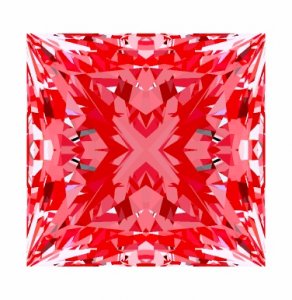pricescope
Ideal_Rock
- Joined
- Dec 31, 1999
- Messages
- 8,266
Kudos to Paul for his new article: The matter of depth in a princess-cut
Date: 4/20/2005 12:54:50 PM
Author: oldminer
No one would choose overly deep unless the price was adjusted lower to make the smaller looking stone a less costly diamond.
As far as I know, there are two "commercial arguments" against that extra depth: #1 that it makes diamonds look smaller for the money, and #2 that it makes them less brilliant.
#1 sounds interesting, but it's just half truth, because the statement fails to mention that prices are adjusted for spread, so "smaller for the weight" does not equal "smaller for the money". Perhaps some stats showing that might be of use to be added to the article.
#2 is one bit of folklore never explained. It may come as a silly interpretation of that ubiquitous scheme (link to one example) used by shows to explain "best cut" as a happy middle between "too shallow" and "too deep" without explaining why or what "too much" is.


Hi Radiantman,Date: 4/21/2005 2:44:19 PM
Author: RADIANTMAN
Paul:
Do you know what the range of depth percentages AGS 0''s are likely to have? The sense I get looking at the cutting parameters they have provided is that the depth %''s are likely to be fairly high.
Also, the spread criteria they are using seems to be quite lenient. Am I correct that the new AGS 0''s are likely to be very lively but somewhat small looking diamonds?
Sorry, I was re-reading this, and my sentence is not complete. Unfortunately, I was too late to edit the post.Date: 4/21/2005 3:32:34 PM
Author: Paul-Antwerp
I have also made calculations, looking for the minimum side-to-side diameter needed in order to get an AGS-0. If I then take that minimum side-to-side diameter, and from there calculate the average diameter of a square stone (thus including the point-to-point diameter), that average diameter of the AGS-0 is 6.51 mm.
You must have replied to "Researcher", but this might just apply to my rambling as well...Date: 4/22/2005 12:57:52 AM
Author: Garry H (Cut Nut)
It is out of context here.
Post it on the regular board please.


This rings crystal clear. ThanksDate: 4/22/2005 11:34:44 AM
Author: RADIANTMAN
My understanding of his point is that while a princess with a higher depth % is more likely to have a smaller spread, this is not necessarily true for any individual stone. The complexity of the cutting makes it possible to cut a princess with a lower depth % that actually spreads smaller than one with a higher depth %.
